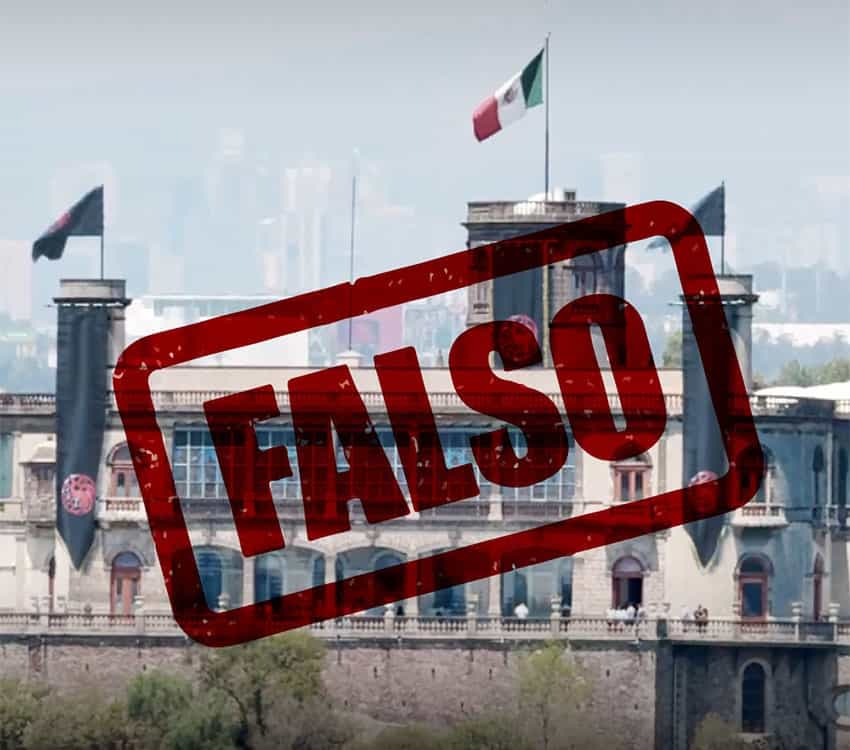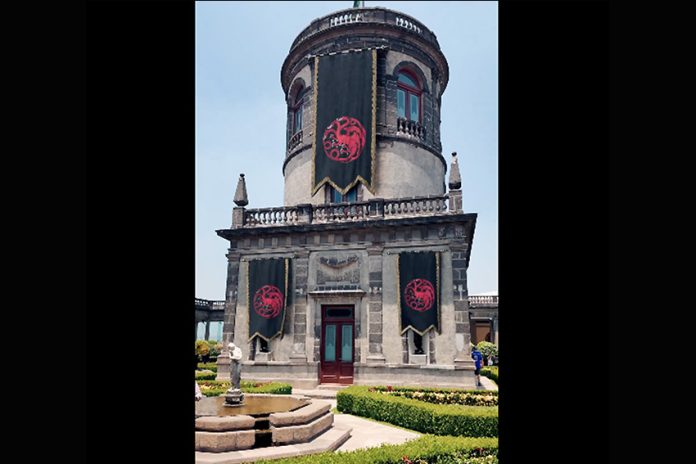Did Mexico City’s famous Chapultepec Castle recently fly the flags of one of the noble families from the “Game of Thrones” and “House of the Dragon” series?
A promotional video the Max streaming service posted to social media Monday seems to show that, but the National Institute of Anthropology and History (INAH) says it didn’t happen. The footage in the online ad featuring Chapultepec Castle, it says, was the product of creative editing or artificial intelligence.

Clearly unimpressed, INAH said in a statement that it would launch legal action against what it called the “improper use of images” at a historical monument.
The online ad posted to the X social media platform by Max Latinoamérica on Monday shows video footage of black Targaryen flags featuring a red dragon fluttering in the breeze at Chapultepec Castle, an impressive edifice built during the Viceroyalty of New Spain and once occupied by Emperor Maximilian I and his consort Empress Carlota.
“The Castle of Chapuletepec in Mexico was claimed by its queen Rhaenyra Targaryen and the black council. It’s time to choose your side,” says the online ad for the second season of the fantasy series “House of the Dragon,” broadcast in Mexico by Max Latinoamérica.
Returning this Sunday, the second season of the hugely popular “Game of Thrones” prequel involves different kingdoms taking sides in a war for control over the highly coveted Iron Throne.
INAH made it clear that the promotional video is as fictitious as the series it promotes.
INAH’s statement features a screen grab from the footage superimposed with a large, red “FALSE” stamp.
El castillo de Chapultepec, en México fue reclamado por su reina Rhaenyra Targaryen y el consejo negro. Es momento de elegir tu bando #RaiseYourBanners #LaCasadelDragón #HOTD2 pic.twitter.com/eZIWYminFI
— Max Latinoamérica (@StreamMaxLA) June 10, 2024
The video that drew INAH’s ire.
“At no time have flags, banners or any other promotional material related to said production been placed over this property,” the statement said.
INAH also said that “the reproduction of images” from the Chapultepec Castle in the “House of the Dragon” ad had not been authorized, adding that “what is seen on social media was created by image editing programs of artificial intelligence.”
“For this reason, INAH’s National Coordination of Legal Issues will take the appropriate legal measures, given that it amounts to improper use of images at a historic monument,” the statement concluded.
The Associated Press (AP) reported that it was unclear whether Mexico could win the legal battle against artificial intelligence and computer-generated images.
“The institute did not claim authorship rights of the original video. The site is open to the public, so anyone could have filmed it,” AP said.
INAH may in fact have inadvertently helped promote the second season of “House of the Dragon,” given that its opposition to the online ad has been covered by Mexican and international media organizations.
In another publicity stunt, the official Game of Thrones X account also posted videos showing “House of the Dragon” banners on the Manhattan Bridge and the Brooklyn Bridge in New York.
Those videos were fake as well. AP confirmed that no such banners had been hanging from either bridge.
With reports from AP
